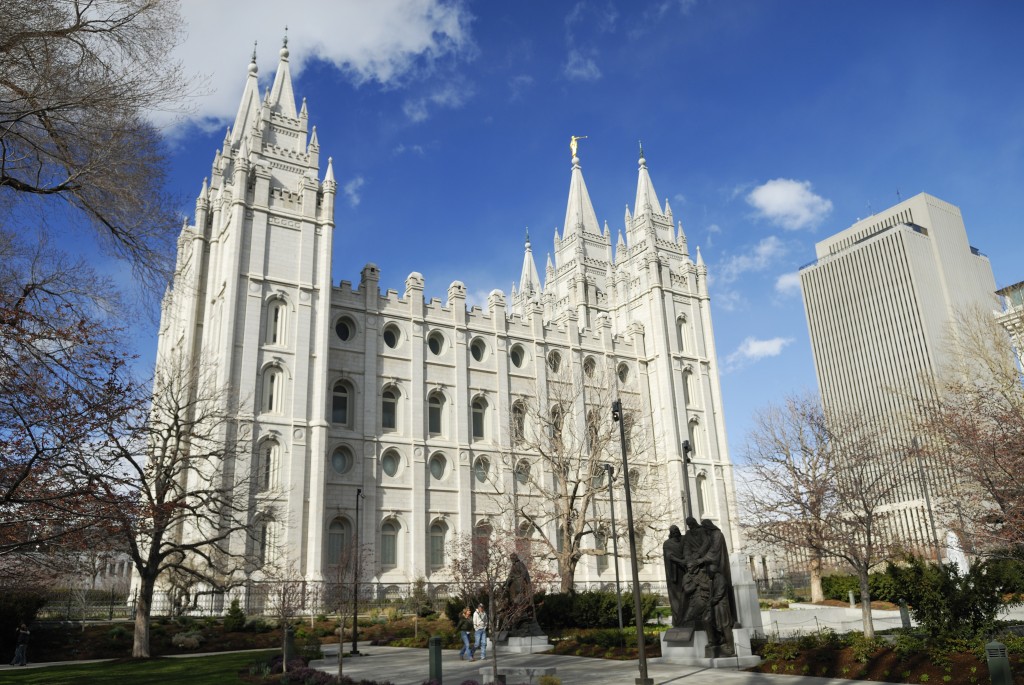
For those of us in the Church of Jesus Christ of Latter-day Saints who have struggled with the patriarchal inequities in our religious practices and policies, the recent changes in our temple ritual, many of which significantly address some of its gender inequality, are a long-awaited and welcome answer to the prayers and petitions of countless women. That the Church has asked us not to discuss them makes it difficult to process both the exhilaration and the years of anguish attached to such an announcement. It’s also unrealistic in the age of social media. As such, we’ve assembled links to a number of public sites that we think offer information and thoughtful responses to these changes.
The first is the Church’s official statement:
“Whenever the Lord has had a people on the earth who will obey His word, they have been commanded to build temples. Scriptures document patterns of temple worship from the times of Adam and Eve, Moses, Solomon, Nephi, and others. With the restoration of the gospel in these latter days, temple worship has also been restored to bless the lives of people across the world and on the other side of the veil as well.
Over these many centuries, details associated with temple work have been adjusted periodically, including language, methods of construction, communication, and record-keeping. Prophets have taught that there will be no end to such adjustments as directed by the Lord to His servants.
A dedicated temple is the most holy of any place of worship on the earth. Its ordinances are sacred and are not discussed outside a holy temple.”
The Church’s statement notwithstanding, the recent changes appear to be much more than mere “adjustments”. The Salt Lake Tribune reported that now “men and women make all the same covenants, or promises, to God, rather than separate ones. Women also no longer covenant to hearken to their husbands [or veil their faces]. ‘If you ask any faithful feminist what she wanted to change,’” one woman who participated in the new ceremony told the Tribune, “‘these hit the entire checklist. Every single complaint was addressed and fixed in a meaningful way,’ she said. ‘This was not a baby step; it was like a leap forward.’”
After listing a number of the purported changes, Religion News Service columnist Jana Riess wrote, “I can understand leaders’ desire to keep the changes out of the news if possible (though that is surely a losing battle in 2019), and I can also appreciate a reticence to explain the ineffable. One of the gifts of the temple has always been that we are free to exercise our own agency through prayer to determine what it means; no one in authority dictates its interpretation.”
“But,” Riess continued, “complete radio silence is inadequate in this case. As Emily Jensen [who is quoted in the post] pointed out, it’s particularly damaging to women if we don’t talk about the changes. ‘For as long as there have been temple ordinances, women in the Church of Jesus Christ of Latter-day Saints have borne the brunt of covenanting and acting in a way that seemed contrary to much of what they were taught outside of the temple about their relationship with the divine and the eternities. This has now changed. … We have to acknowledge the change. Because if we do not, we as a Church will continue to force women to bear the burden of wondering if they were wrong.’”
The Exponent II blog featured several guest and reader responses to news of the changes in a two-part “Sisters Speak” series. “Like many others,” wrote ECR, for example, “I’m so excited by the changes and the theological implications. … I’m also mourning my own experience, and how much better it could have been. … I need to sort through these feelings in a way that doesn’t use concealed and coded language. It’s difficult to be told by men not to openly celebrate or react to something that doesn’t impact them as much as it does us. Why minimize something so theologically monumental?”
Moss, another Exponent respondent, poignantly posted: “I’m in tears over this. So much pain and angst over this for the last 15 years. … And now it’s changed. And they’re not going to tell us why our suffering was necessary.“
Exponent reader ML added: “My heart is full of joy for these changes. To borrow from the lovely talk at last conference, I’ve felt a lot of ‘divine discontent’ towards the temple for a while now. To hear that so much has been fixed is beautiful. I know it isn’t completely fixed yet, not by a long shot, but I’m eager to attend after a pained hiatus and witness the changed ordinances firsthand.” She ended with a hope many share: “I can’t wait for the day that all has been made right and whole and safe for ALL of God’s children to attend the temple.”
See also “I Don’t Take Women’s Ideas and Claim Them as My Own–God Gave Me These Ideas. And In Completely Unrelated News Please Don’t Talk About These Ideas and Let’s Pretend Those Women Don’t Exist,” “Renewing My Vows,” “Temple, Gender, and Restitution,” and “She Who Speaks” at Feminist Mormon Housewives; “Let’s Hear It for the Boys! (and Other Shout-outs Re: the Temple Changes)” and “What I Was Supposed to See” at Sisters Quorum; “Standing Between Covenants,” “So. Many. Feelings,” and “Still Seeking Greater Light and Knowledge” at Rational Faiths; “A Mind Turned to The Mothers,” “Don’t Forget About Us,” “O Remember, Remember,” and “Another Perspective on the Temple Changes” at Exponent II; “Are the Change in the Temple Meaningful” at Zelophad’s Daughters






